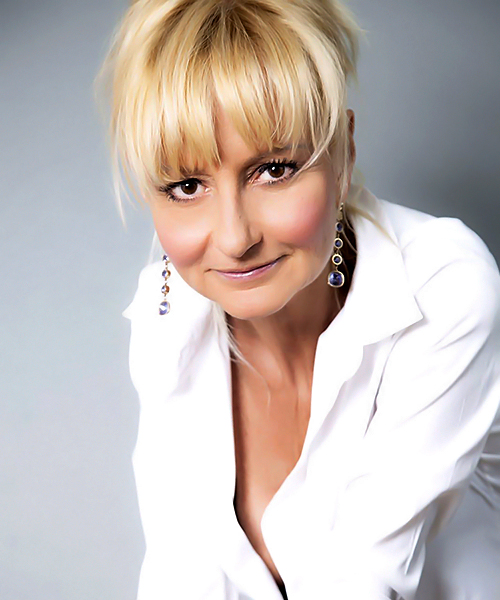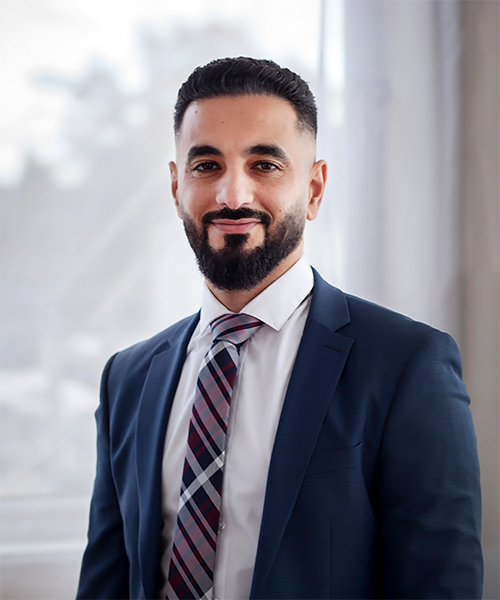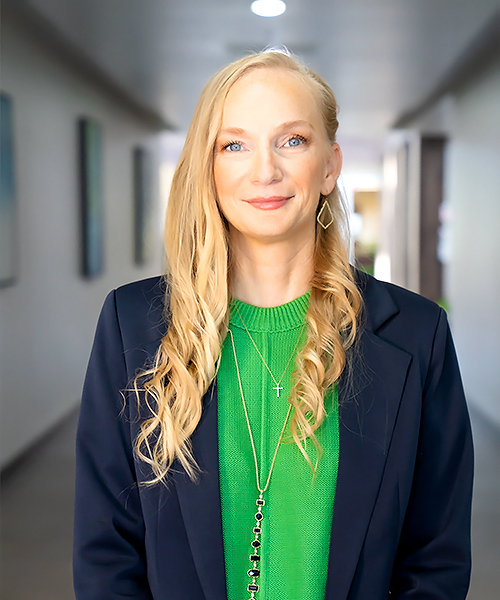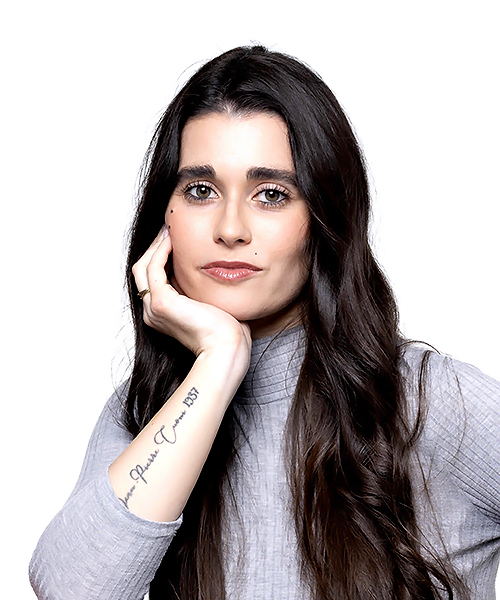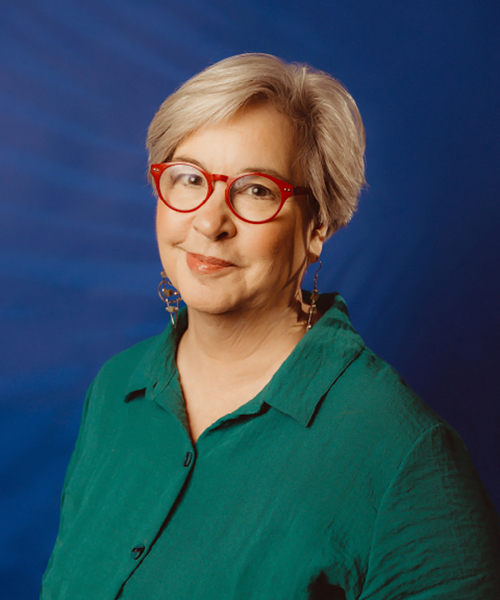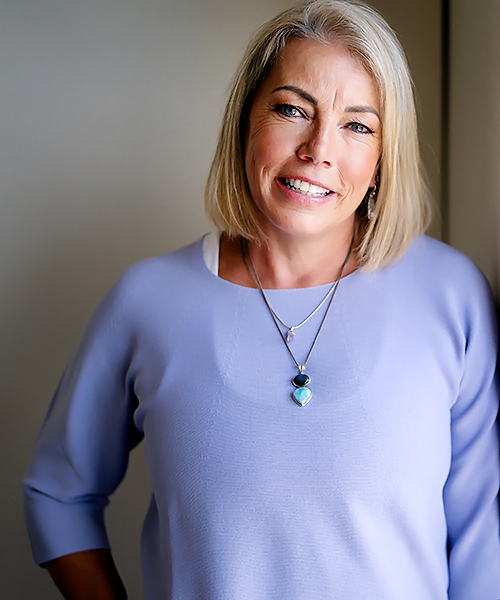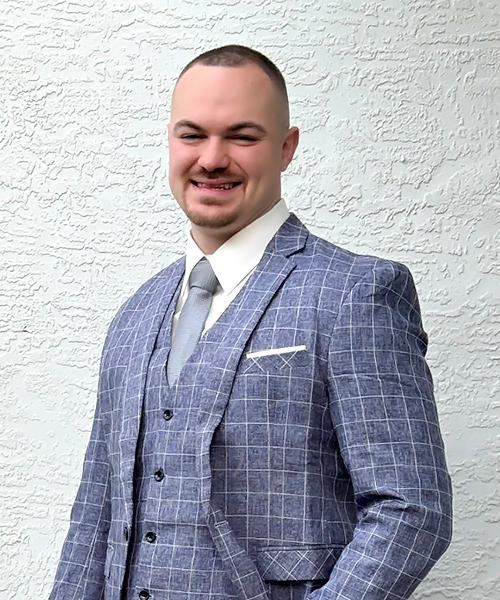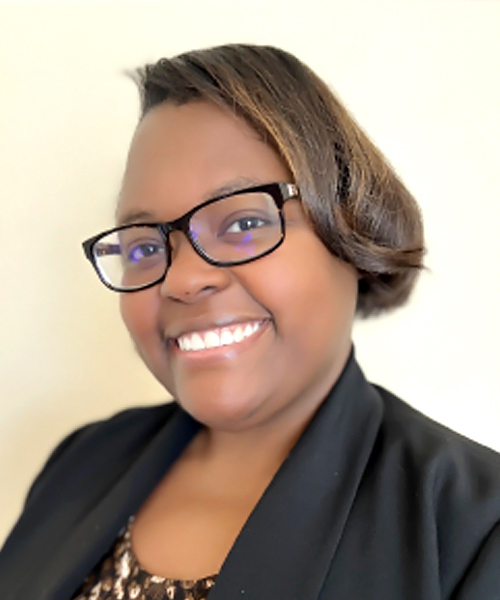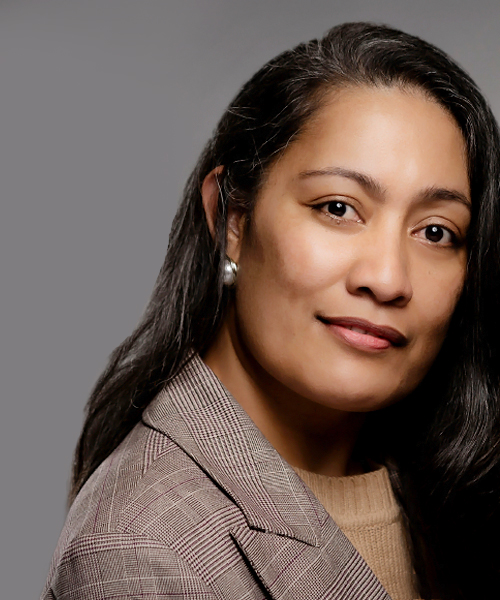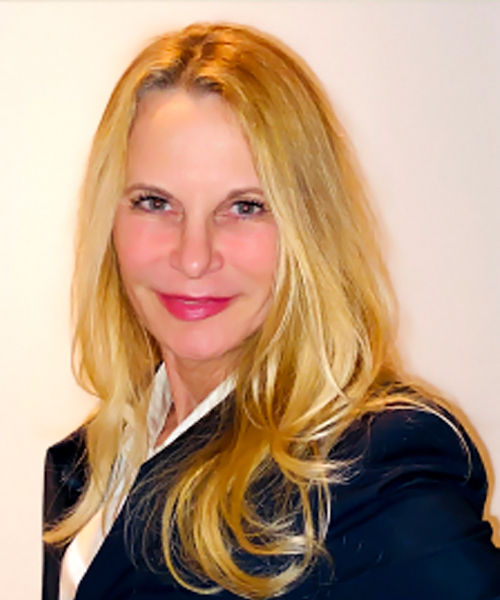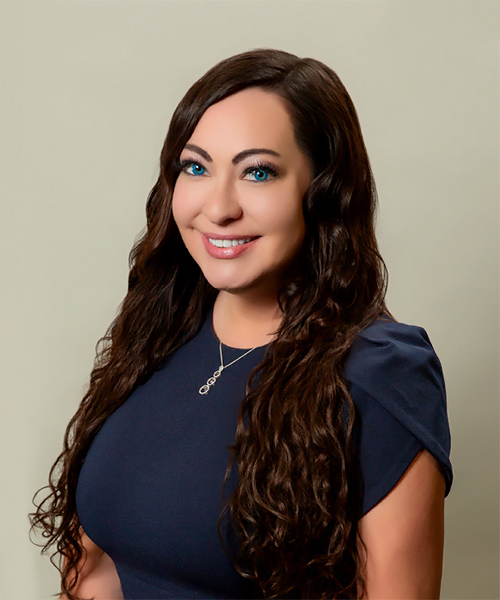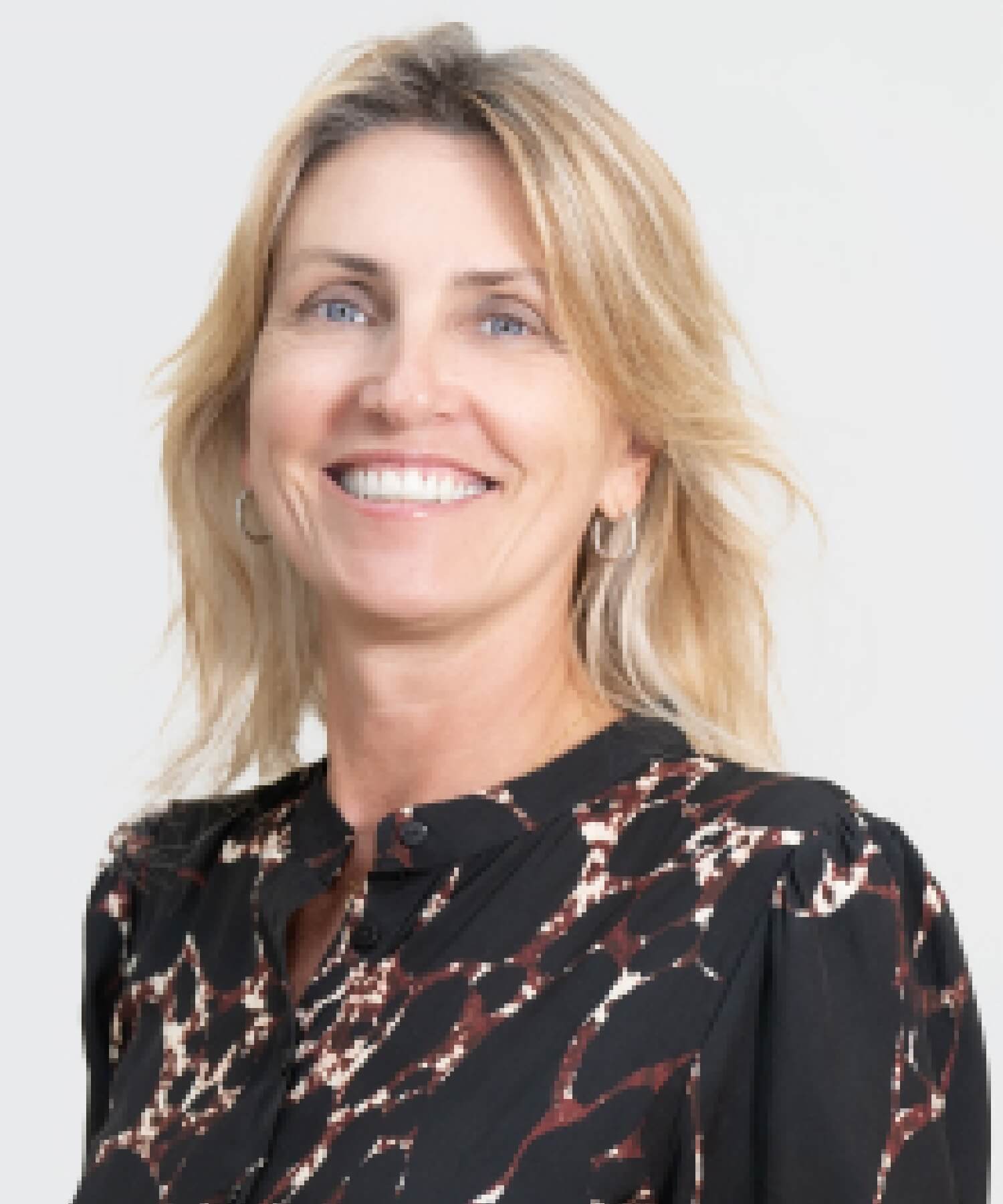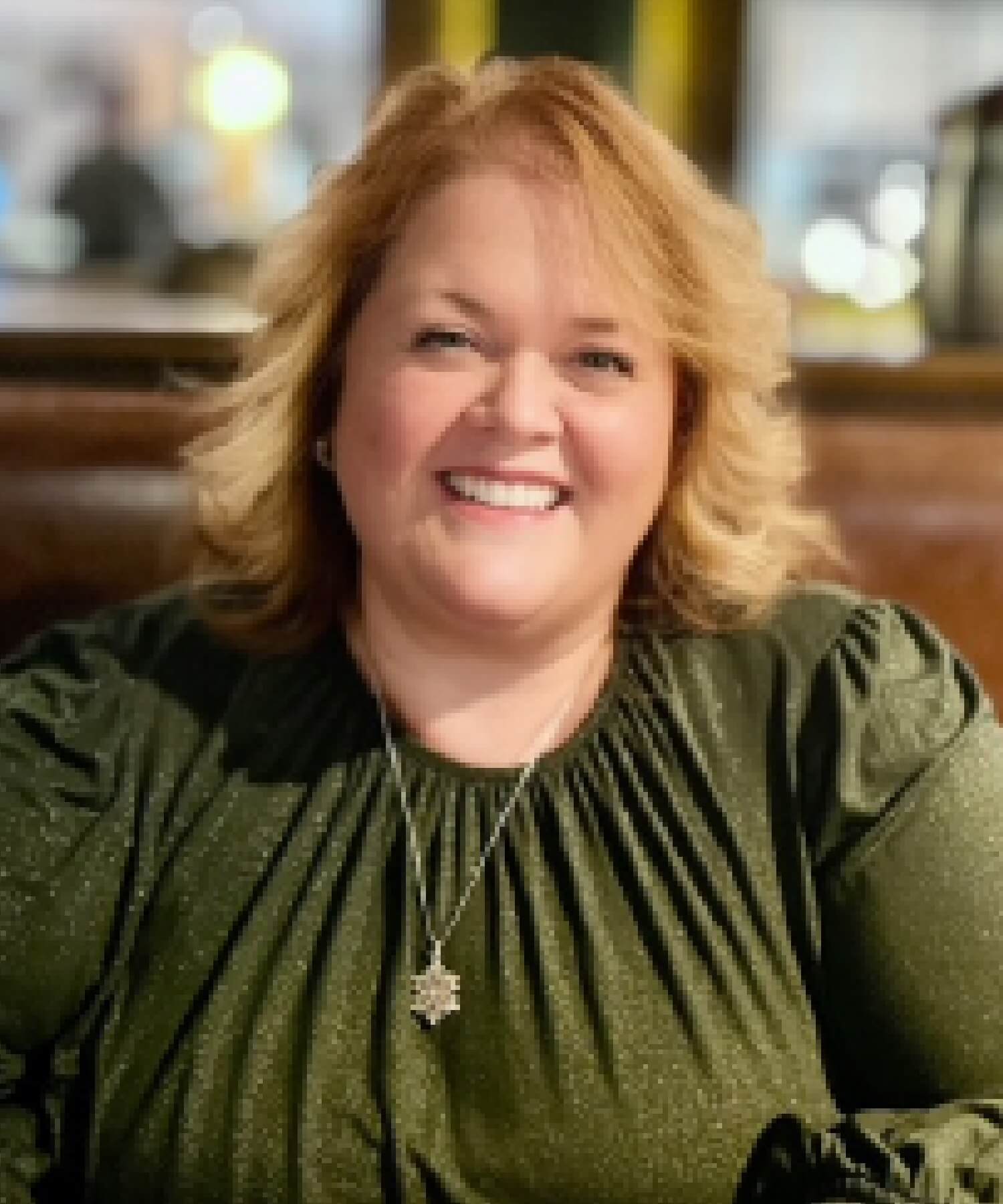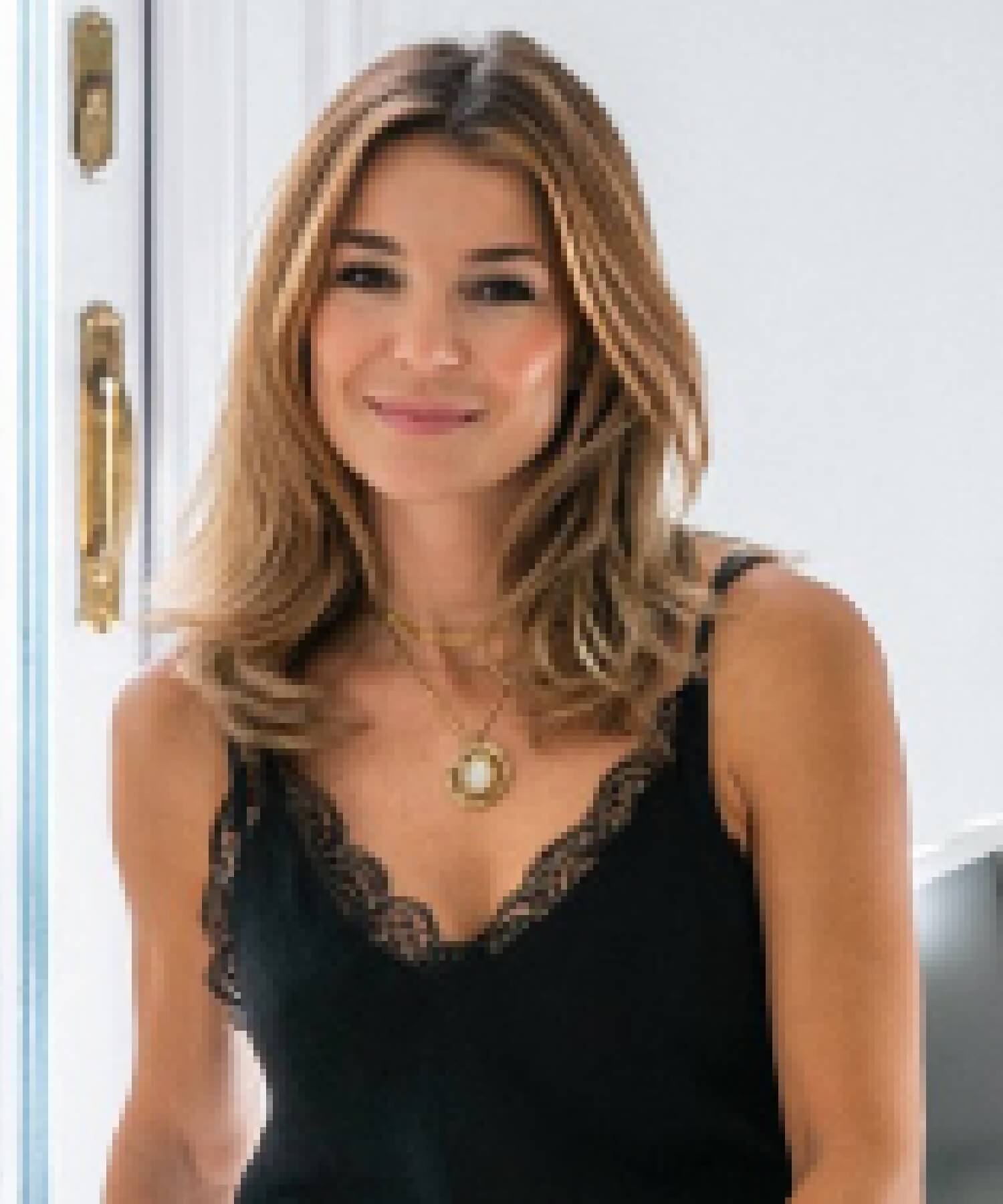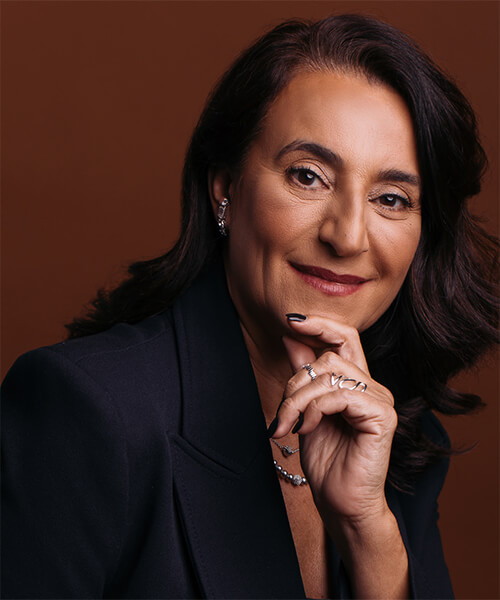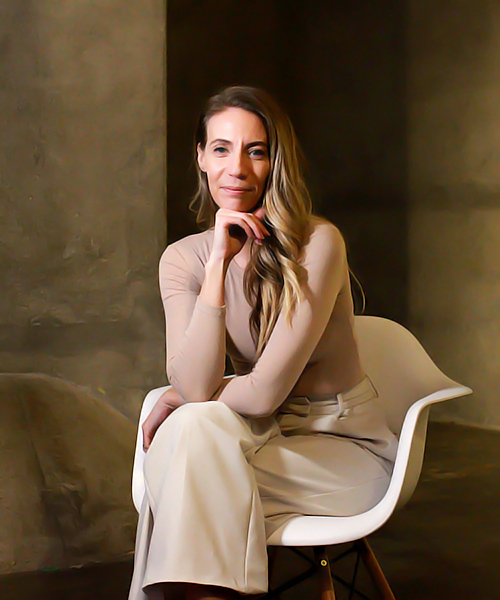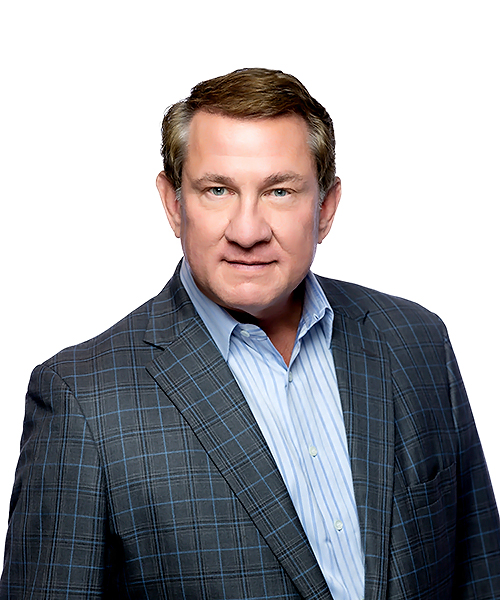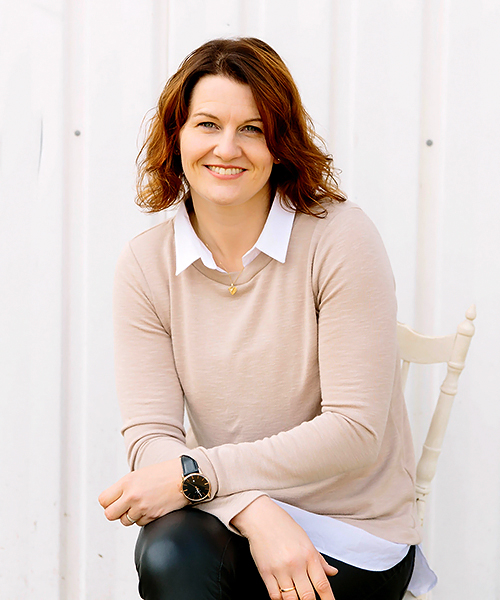Esther Marijuan, the Regional Director of Sales at United Hospitality Management, is a shining example of such a visionary leader.
Martha Schwartz
founding partner of Martha Shwartz Partners (MSP)
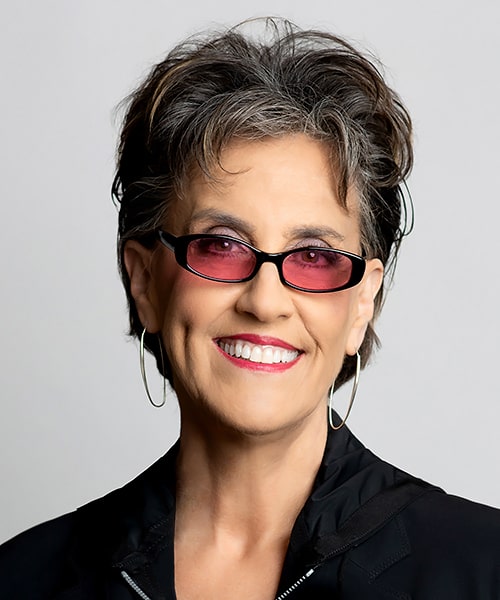
Martha Schwartz
founding partner of Martha Shwartz Partners (MSP)
Women leaders have been instrumental in changing the world. From Indira Gandhi in India to Golda Meir in Israel and Margaret Thatcher in the United Kingdom, the journeys of many such women have been truly inspirational. Taking the whole world by storm, women leaders have excelled in almost every field and domain, in turn, showing their true prowess as good administrators and leaders. The field of Landscape Architecture too has many wonderful women leading the industry, and Martha Schwartz is one such leader, who is leading towards calculated change of the industry and the society.
A complete SOLUTIONS oriented personality, Martha Shwartz is a founding partner of Martha Shwartz Partners (MSP), a leading international design practice whose work focuses on regenerating, activating and beautifying natural sites and urban centers. Situated at the intersection of landscape architecture, urban design and site-specific climatic considerations, MSP has almost 50 years of experience designing and implementing public spaces, brownfield sites, large scale master plans, and art installations, working with city leaders, planners and developers at a strategic level.
Moreover, as the founder of MSP, Schwartz believes there are always problems that need to be solved, and she actively involves herself to institute change within the profession of landscape architecture. “I have worked with many talented people, who were interested in design and art, and these are the people who have created what MSP is known for, which is its design excellence”, shared Schwartz, talking about how and why MSP was founded. Continuing on her above statement, and adding a point on her current role at MSP, she exclaimed – “While I am not running the company anymore, not spending most time “on the boards”, I am still involved in making sure that our ‘design excellence’ is still ‘excellent’”.
An all-rounded personality who connects deeply with art, nature and Earth, Schwartz is a mother of 3-children, apart from having an impressive career in the field of landscape architecture. She has also been teaching as a Professor in Practice at the Harvard Graduate School of Design for 30 years.
Rise towards equality and excellence
Schwartz started her career in the fine arts as an undergraduate at the University of Michigan. Due to her interest in the early “Earthworks Artists” (Smithson, DiMaria, Crhristo, Di Maria, Christo, Heiaer, Long) she decided to continue her education in Land Art. However, there was no Earthworks 101” classes. She turned to landscape architecture for a master’s degree to further her interest in designing the landscape.
In a very short time after graduation from the Harvard Graduate School of Design, she decided to build a very small garden in front of her house in Back Bay Boston ‘planting’ over 5 dozen bagels bought from the local delicatessen., called “The Bagel Garden”, what would now be considered as ‘installation art’. Given her deep background in fine arts, she was frustrated with the profession, as in the early 1980s the profession of landscape architecture was very white-male-modernist with a notion that design should be ‘appropriate’. Thus, rising above all who had a very narrow perspective of what landscape design should be, Schwartz wrote a short article making the case that a bagel was a perfect ‘material’ for gardens. Explaining in detail how Bagel Installations are inexpensive, are easy to install, do well in the shade, don’t need water, and are biodegradable, this writeup ended up on the front cover of the American Society of Landscape Architecture. Because of her deep background in Fine Art, Schwartz knew she was mimicking the famous art piece by Marcel Duschamp, a known DaDa artist who, in 1917, created real contention within the art society, by putting a toilet as a piece of art into a museum show. This brought up a debate about what is art, and who defines it? Duchamp was almost cast out of the art scene by conservative artists and galleries, however, his work is now considered as a foundation of many of our art movements that developed into the ‘Modern’ Century’ , from Cubism to Dada to Surrealism, and paved the way for later styles up to today, such as Pop (Andy Warhol), Minimalism (Robert Morris), and Conceptualism (Sol LeWitt). Like Duchamp, Ms. Schwartz got quite a lot of pretty nasty comments. However, the younger people saw an opportunity to expand their imaginations, and explore new ideas for design. Also, the fact that she was a woman was also a bit annoying to many who were upset and afraid that she had made the profession of landscape architecture look “silly”. However, this created an important turn in the profession through opening up a more energized and diverse range of design, which has enriched the profession in the US, Canada,UK, China and the other parts of the world. As a result, Schwartz has been told that her career as a woman ‘disrupter’ has empowered other women to be bold and to ‘go for it’, meaning they should follow through on their ideas and ambitions, and not be worried about what others think.
Deep dive into climate change & beyond
Schwartz’s move into climate change activism came abruptly in 2016, when she was listening to a YouTube video about the melting of the Eastern Siberian Arctic Shelf, narrated by Prof. Peter Wadhams. The video elaborated on the topic of risks associated with escaping methane, and its serious consequences as it is 78% more powerful as a greenhouse gas than CO2. . She states – “After watching the video I felt that what I was doing as a landscape architect was irrelevant”. She continued – “I have three wonderful children who will be living in a world of rising risks of climate change, which I had created (unknowingly), and I am obligated to do something worthy to bring a positive change”. Since that day, Schwartz stopped her work in landscape architecture and made a deep dive learning about climate change, how this happened, how we affected the Earth System, and disrupted ecological communities and the Earth’s cycles.
Her curious nature also pushed her to learn about the impacts of climate change the world will be facing if we don’t act immediately, and how the countries of the Global South are the most vulnerable to climate change and the disastrous impacts they are experiencing now. Given that she has always been a “solutions motivated” person, she looked for solutions that could stop climate change, including those that could deter the upward spiraling of Unchecked Global Warming. In this very pursuit, she found out about the science of geoengineering, defined as “the deliberate large-scale manipulation of an environmental process that affects the earth’s climate, in an attempt to counteract the effects of global warming”. Also, Schwartz was excited and pleased to hear about how some scientists, called geoengineers, have already come up with ideas which can address Climate Change impacts in numerous ways to modify climate change, including a group of methods that may be able to tamp down global warming and stabilize the Earth’s climate, called Solar Geoengineering.
Being a very well-learned person, who also double-majored in biology in undergrad, and almost decided to be a doctor, she always followed what was going on in science. With Royal Institute of British Architects (RIBA) and RDI honors credited to her name, it hardly took her much effort to latch onto the topics of climate change and Geoengineering. She even taught a seminar, at Harvard, called – “A Geoengineering Toolkit for Designers”, which included a background on the Earth System and introduced the range of ideas scientists have come up with that could increase the Earth’s albedo to cool it down (Solar Geoengineering) and to take down atmospheric carbon dioxide (Direct Air Capture). Schwartz also learned about Stratospheric Aerosol Injection (SAI) , in this journey of hers, which scientists believe can cool Earth, and give us some spare time to move to renewable sources of energy. Schwartz had read a review on Solar Geoengineering by the Royal Society Report , the world’s oldest independent scientific academy, dedicated to promoting excellence in science. In this report they say:
“SAI could reduce the effects of global warming and its associated risks effectively, globally, rapidly, reversibly and inexpensively. It also seems to be technologically feasible. A few grams of it in the stratosphere will offset the warming caused by a ton of carbon dioxide. And even the amount that would be needed by 2070 is dwarfed by the roughly 50 million metric tons of sulfur emitted by the burning of fossil fuels every year. However, at the same time, it could pose multiple serious physical risks and social challenges- all of which need research and study to be able to address these challenges. Nevertheless, solar geoengineering will likely be necessary to be a player within internationally-agreed upon suite of methods to address global warming.”
While SAI has given us a possible way of avoiding “Climate Catastrophe’, there are risks which need to be researched in order to determine whether or not SAI should be deployed. Schwartz says, “Given we are now in a ‘risk/risk’ situation, the question one must face in determining whether to deploy SAI or not, is based on evaluating the risk of deployment of SAI vs the risk of Unchecked Global Warming Climate Change. This has generated a debate within countries such as the USA, UK, & Scandinavia. However, the Global South countries are not part of this discussion, and would be the countries that the use of SAI could be more beneficial than to the Global North countries – another issue of Climate Inequity.
MAYDAY.EARTH - Ensuring safer futures
It had become evident by now, that Schwartz wouldn’t just want to stick with associating herself with other climate change activists and organizations, but to actually do something on her own. And thus, MAYDAY.EARTH was started as a non-profit organization, which supports the RESEARCH of Stratospheric Aerosol Injection, and brings the voices of the Global South to the table in this debate: TO research or NOT TO research.
Regardless of educational backgrounds, resources or geographic locations, through MAYDAY.EARTH, Schwartz and her team of landscape architects, scientists, and activists dedicate themselves to answering the distress call from our planet, working towards educating people everywhere. Additionally, while simultaneously focusing on the citizens of the Global South, the development of SAI, MAYDAY.EARTH is focussed on issues of Climate Inequity, as Schwartz believes that Climate Change, which has caused Global Warming , is the largest issue of Inequity in the world. Stating a point on how she wants MAYDAY.EARTH to progress towards societal-equality, Schwartz shares- “We want to aggregate and connect people from around the world who wish to be educated on Solar Geoengineering and who wish to express their support of its research”. She adds – “We wish to connect to other individuals and organizations who support this mission through Online Discussions and Debates, Lectures, Readings and access to a PDF Research Library, and organization of existing and new content on Climate Change and Geoengineering, so the Global South countries can access information that they are not receiving from the Global North. Education is paramount to learning more about Climate Change so the Global South countries can do more to protect themselves.
Transformation of MSP and the profession of Landscape Architecture.
Due to Schwartz’s interest and knowledge on the topic of climate change, geoengineering and the Earth System, much learned from scientists at Harvard School of Engineering and Applied Science (SEAS), Schwartz, due to her self-education on Earth System Science, transformed as a person who was able to better understand the importance of NATURE, and the benefits that we, humans, are served by Nature.
Her concern is that the people within the wealthy, industrialized countries of the Global North have lost touch with nature, who believe that technology will be the answer to Climate Change. She believes that due to the incredible rise of technology, we have forgotten that nature provides for us. Given that humans are organic-based animals, we need nature to provide our (organic)food, biodiversity, fresh water, and oxygen, all of which is under risk due to climate change.
But Schwartz says that the need for ADAPTATION and regeneration is, not only pertinent to “natural environments’, but will be critically needed within our cities too, as most cities will share many of the same climate impacts: severe heat, floods, droughts, lack of access to food and water, sea level rise, loss of biodiversity, and vector-borne diseases. Schwartz has been lecturing on the importance of the URBAN LANDSCAPE, which she says to be invisible to almost all sectors within the built environment (architects, city planners, urban designers, mayors and other city governments). Through her own experience working within cities, Schwartz says that we have come to believe that the urban land is valued only by what is built upon it.
She strongly believes that due to our education in landscape architecture, of natural systems and the vital importance of the regeneration of the Earth, the profession of Landscape Architecture is able to provide services for climate ADAPTATION and that landscape architecture will be the “GO TO” profession in the near future. In a book by Gernot Wagner, a geoengineering scientist and economist, says in his book “Geoengineering: The Gamble, < he explains that taking down emissions is for the future, and ADAPTATION is for now. He explains that first, we put up greenhouse gas emissions into the atmosphere by burning fossil fuels, which traps the heat coming from the sun like a big, thick blanket of CO2, causing the Earth to heat up due to the Earth’s inability to bounce the heat back into space. The incoming heat is also absorbed by the earth and oceans. The trapped heat absorbed by the Earth, known as “embedded warming” is very slowly released back into the atmosphere decades after the emissions have been absorbed by the soil. This slowness is due to the slowness of natural processes. What we are feeling today are the impacts of CO2 absorbed by the Earth decades ago. Therefore, dealing with emissions is for the future. However, ADAPTATION tackles the impacts of climate change NOW, protecting human welfare. We need to stop our only focus on emissions, and must get to the part where we start to protect ourselves from unchecked global warming and the reality that we are not going to make the Paris Agreement Goal of 1.5C
Schwartz says that since the Global South is on the forefront of Climate Change, it must start to ADAPT NOW. Since 78% of all the people are going to be living in cities by 2050, the ‘Urban Landscape’ will prove to be a critical player in the protection of cities. However, it is just plain stupid for the Global North countries to no consider ADAPTATION for ourselves. She says that New York City, where she lives, is starting now to figure this out, as the city is terribly vulnerable to severe rains and sea level rise.
Given that we will pass the Paris Agreement’s goal of 1.5C, we are entering a Climate Crisis, which will create global devastation. Cities around the world will be facing major impacts such as extreme heat, lack of access to food and water, floods, draughts, vector-borne disease,and many such catastrophes. ADAPTATION can address all of these impact, and this points directly to the profession of landscape architecture
However, as an actor within the ‘Built Environment Sector,’ she believes that most of the sector’s professionals, including mayors, developers, planners, and others who are in charge of the many urban sectors worldwide, are completely ignorant of the importance of the “Urban Landscape”. Schwartz says it is ‘invisible’, as its value is seen only by the value for what is built on it. Schwartz is particularly involved in this issue, and lectures on ”Climate Change and the Urban Landscape”.
As well, Schwartz has shared her learning with her company MSP. Schwartz says, “MSP has incorporated this knowledge within MSP and makes sure that we teach our clients so they are knowledgeable on the climate change impacts that may be coming their way. With this information, MSP often works in collaboration with other professionals (engineers, ecologists, soil scientists, geologists etc.) to ensure that their client’s investments will be able to face the future.”
MSP now proudly brings this knowledge to all their clients as most are not aware of the impacts of climate change they will be facing in the next 50 years or so, and that their investments will likely be at risk. Lastly, under Schwartz’s clairevoyant leadership, MSP and all its stakeholders are able to offer solutions that can improve these impacts and through conversation and what MSP calls, “Pre-Design” MSP is aiming to move forward to determine appropriate infra-structures, land planning, land management, proper materials, soil health and the right plants, all of which are foundational to the next step, which is sustainable and beautiful design.

Company
Martha Shwartz Partners (MSP)
Management
Martha Schwartz
Founding Partner
Description
MSP is a leading international design practice whose work focuses on activating and regenerating natural sites and urban centers. Situated at the intersection of landscape architecture, urban design and site-specific climactic considerations.
Read Magazine
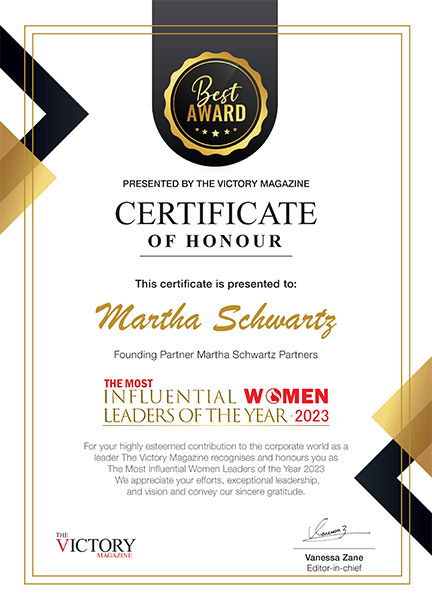
View more profiles
One of Brandi Sutter’s most defining moments was seeing the first batch of Weston Heated Apparel products...
Rebekah Tobias, in her role as Managing Director, focuses on assembling high-caliber teams within real estate ...
As the CFO Elizabeth leads the finance function to ensure accurate and timely reporting that supports the company's strategic, commercial, and financial goals.
After earning her degree in Structural Civil Engineering from the University of Genoa, she launched her professional journey....
Jenny Rosario’s journey from a small town to a significant leadership role in the corporate world highlights her remarkable growth..
Jenny Rosario’s journey from a small town to a significant leadership role in the corporate world highlights her remarkable growth..
Her current focus lies in mentorship, alongside her passion for strategizing and business development.
Noëlle Demole's perseverance and dedication to bringing about social change are shown by her path to founding EGIDAYS.
Michelle Fiegehen, an Australian senior director currently based in the Philippines, leads and develops Yempo’s operations.
As the Global Communications Director at Kushki, Eva oversees all internal and external communications
Cindy Eggleton values relationships deeply, dedicating much of her time to friends and family. She has a passion for art and unique local businesses..
Complete Framing Solutions stands out from the competition due to its comprehensive approach to construction.
Sally Estlin embraces a powerful mantra guiding her through life's ebbs and flows: Let go, Step up, and Be more.
Tara Home Consulting distinguishes itself by not only advising on what needs to be done or which software to buy but by deeply integrating into the client's company.
Rick also believes that successful collaboration entails active engagement, empathy, accountability and a readiness to work towards common objectives.
In his role as CFO of Purple Brand, Jonathan Melegrito leads both the Finance and People & Culture teams
Beyond his professional pursuits, Jesse's passion for speed and racing defined much of his youth.
Jack Sharp oversees every aspect of Progressive Screens, from product design to nurturing the company culture.
Burns Virtual Psychological Solutions prioritizes a meticulous approach with each patient, emphasizing quality over quantity.
Earth Retention captured Malia's attention due to the opportunity to address real challenges and implement meaningful changes within the company.
Grace's involvement in implementation projects for strategic clients sparked her interest in the "Field Organization," where she ...
Carina and her staff are essential components of a worldwide family, having joined Hosts Global with pride.
Angela Cherry firmly believes that as long as one is alive, there are endless opportunities for learning and self-improvement.
Beyond her professional avatar as a Boss Woman, Margot is a hardcore pleasure seeker at heart. Anything which guides her away from the mundane way of life,
Valerie Berthereaux feels incredibly fortunate to have a loving and supportive family and friends. Her two children bring her immense pride,
Balancing her personal life with her role as a transformative coach, Jennifer practices what she teaches. She remains true to her values, recognizing the essential.
Passionate about healthy living, Patricia Berrocal, an advocate for balanced well-being, finds joy in activities such as sports, yoga, and skiing.
Committed to both personal and professional development, Paula prioritizes continuous learning to enhance her performance and capabilities.
With a steadfast vision for advancing along this path, Winnie sought counsel from seasoned entrepreneurs.
Renée Dobos has a profound personal connection with the transformative power of education.
From a young age, Christine McGuire drew inspiration from her parents' strong work ethic.
Caroline Alan, not hailing from a scientific or medical background but rather from the tech realm,
In his daily pursuit, James focuses on incremental success, acknowledging that small achievements compound over time.
Frank and his team’s philosophy is to treat the rest of the organization as their clients, and themselves as a key service provider to the company.
At Doppelmayr, Daniela Guerrero has emerged as a trailblazer in this movement.
As a young cross-country skier, Viktoria traveled extensively during weekends for competitions across Finland.










